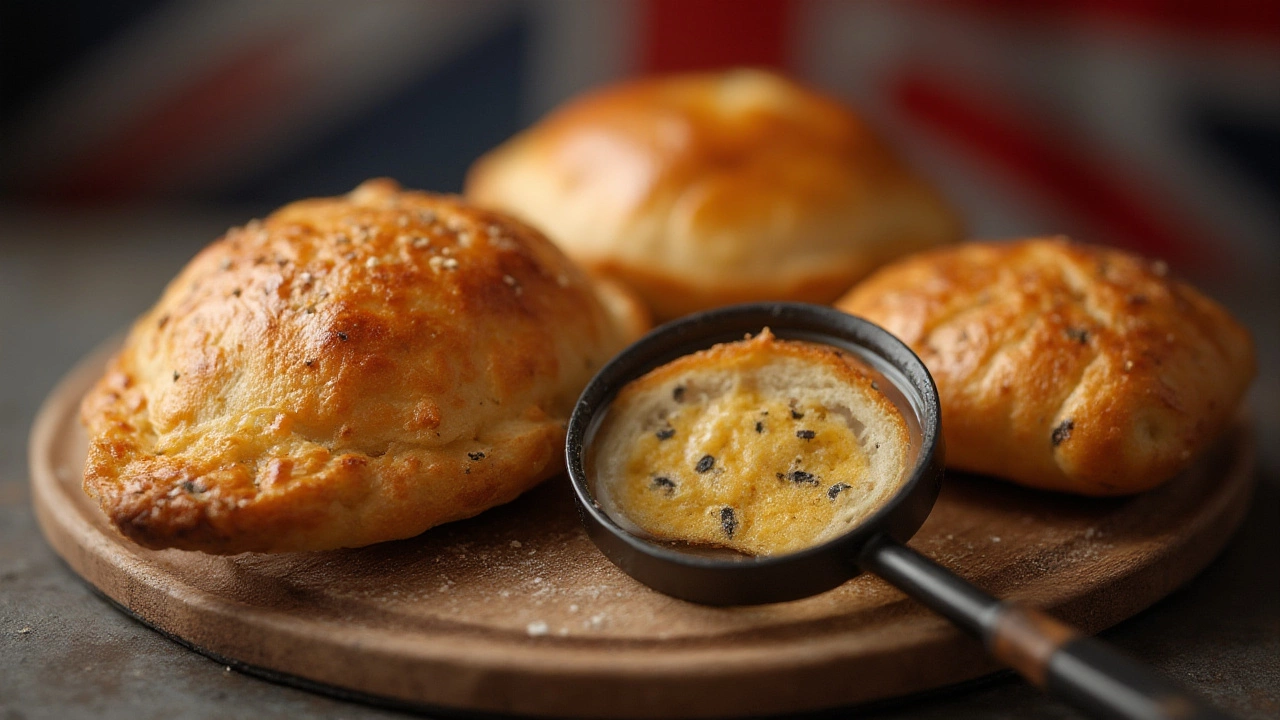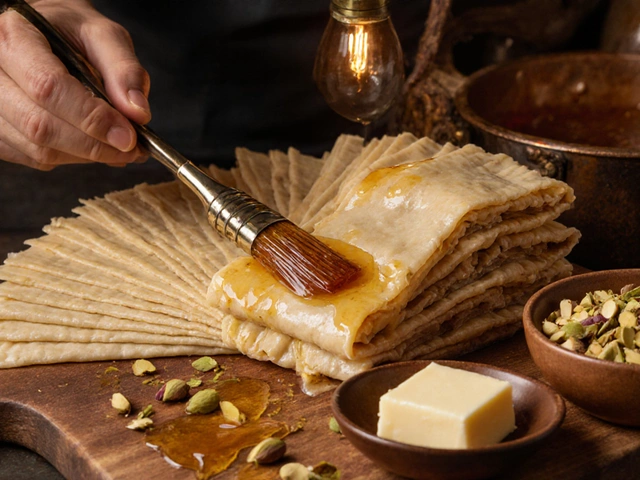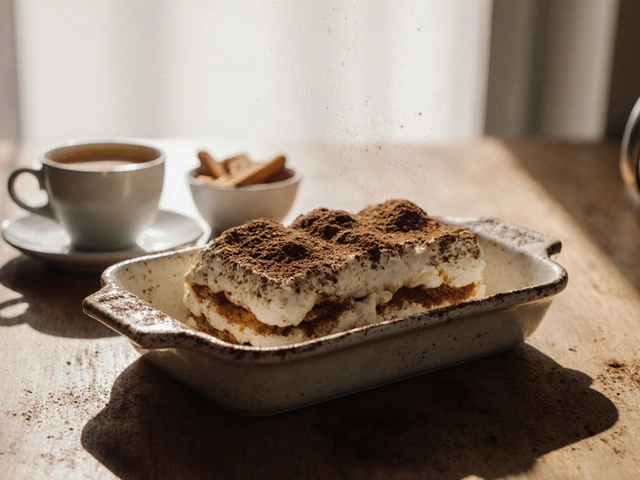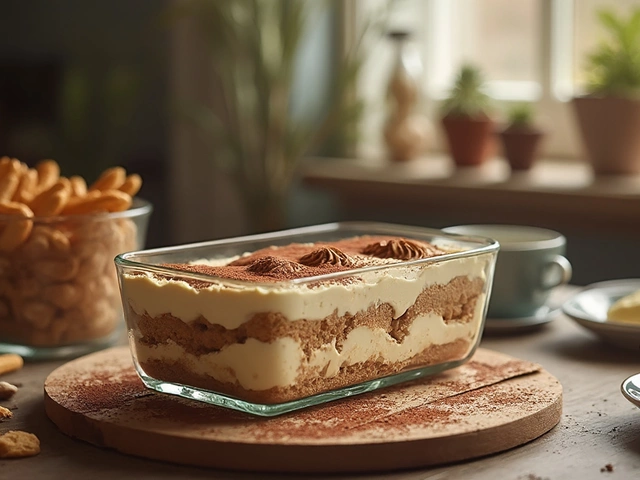If you’ve ever opened your fridge and found a box of savory pastries you bought a few nights ago, you’ve probably had this little moment of doubt before biting in. Can you eat them safely? Or are you about to launch your digestive system into unknown territory? I’ve had my share of “taking a chance” with a cheese puff or mini chicken pie, sometimes with a good outcome, other times not really something I’d repeat (my husband Leonard has that stubborn optimism for leftovers that both impresses and terrifies me). So, how long can a savory pastry actually last in the fridge without turning into a science experiment?
The answer depends on what the filling is, how it was stored, and a few other factors. You’d think one-size-fits-all guidelines would exist, but reality is sneakier. Luckily, there’s a mix of science, logic, and good old-fashioned kitchen know-how to help you decide when it’s snack time and when it’s time to toss.
The Science Behind Pastry Shelf Life: Ingredients and Risk Factors
Baked goods stuffed with meat, cheese, or vegetables—like Brazilian coxinhas, empanadas, spanakopita, or sausage rolls—are complex little ecosystems. The blend of moist fillings and baked dough creates a playground for bacteria. If you keep these treats at room temperature for more than two hours, you’re letting microorganisms have a feast, so straight to the fridge they go.
Once chilled, most savory pastries keep their best quality and safety for 3-4 days. That’s the golden number according to the USDA and health agencies in several countries. After day four, the risk of foodborne illnesses rises sharply. Pastries with meat (think ground beef, shredded chicken, ham, even seafood) are riskier and should never be kept in the fridge more than four days. Even vegetarian options, especially ones with cheese or eggs, can start growing bacteria past their prime. In my own house, Maren knows the rule—if it’s the fourth day and the snack is still in the fridge, it’s not worth the stomach ache, even if the puppy eyes are strong.
Preservatives can play a small role. Shop-bought pastries sometimes last a bit longer due to what’s added, but home-baked ones are usually preservative-free, so they need more careful timing. Never judge solely by appearance! The stuff lurking in a pastry doesn’t always show on the surface. The only exception here? Plain baked dough with no creamy or moist filling—plain bread rolls or dry cheese biscuits might last 5 to 7 days before going stale and moldy, but those aren’t technically savory pastries as we know them.
Other key factors involve your fridge temperature (always below 5°C/41°F) to keep bacteria sluggish, and how fast you get those pastries into the fridge after they’re made. If they're left to cool at room temp for over two hours…don’t risk it. That rush to ‘save time’ by prepping snacks hours before a party can backfire, as bacteria double every 20 minutes at room temperature. So, cool them fast, wrap them up, and refrigerate.

Signs Your Pastries Are Past Their Prime (& When To Toss Them)
Picture this—you're standing in pajamas, fridge wide open, staring down at yesterday's snacks. Is the pastry still okay? It's awkward, but this is where your senses kick in. Start by giving the container a sniff. If anything smells sour, cheesy (in the wrong way), or off, that's your first major warning. Even before mold shows up, bacteria can produce strong odors that aren’t subtle. Leonard is famous in our house for thinking he can ‘air out’ a funky-smelling empanada by microwaving it… Don’t do that. Heat might kill some surface bacteria, but toxins don’t just go away with a quick zap.
Visuals matter, but by the time mold grows, the pastry was already bad hours or even days before. Check for any fuzzy spots, color changes (especially any green, blue, or black hues), or if the dough seems gooey or unusually wet. Egg-based or cream-filled pastries get slimy and develop a weird glossy look when they've started breaking down.
Texture is another clue. Take a fork and gently break into the filling. If the meat or cheese IS sticking together in clumps or seems waterlogged, bacteria might be at work. Sometimes the filling gets dry and crumbly, which means it's not harmful yet but definitely less enjoyable. If you’re thinking “will reheating fix this?”, sadly, no. Once spoilage bacteria or toxins are there, the structure and taste are affected even if the heat kills some surface germs.
Also, if you notice your pastries taste unusually sour, metallic, or bitter, spit it out (seriously, don’t feel embarrassed about acting quickly). Pay close attention to any “off” sensation—even a little tingle in your mouth is a hard no. Food poisoning doesn’t take much, so trust your instincts.

Storing, Reheating, and Keeping That Pastry Fresh
Keeping your pastries delicious for as long as possible is part art, part science. If you’re planning to store extras, first let them cool to room temperature (but not so long that they sit out for hours and become a bacteria factory). Once they’re cool, pack them into airtight containers or wrap tightly with plastic. Less air means fewer chances for moisture to draw in bacteria or cause the dough to get soggy. I usually separate layers with parchment paper. That way, nothing sticks, and each bite reheats evenly.
Location matters, too. Store pastries on the middle shelf, not in the fridge door where temperature fluctuates more with each opening. Stack containers loosely so the cold air can flow around them—this sounds picky, but makes a real difference in keeping things chill.
If you bought pastries in a cardboard box, ditch it. Cardboard absorbs moisture, encourages mold, and doesn’t protect well against fridge odors. Spend a few minutes transferring them to a glass or plastic container. Your future self (and kids) will thank you!
When you're ready to eat, don't just microwave them straight from the fridge. Instead, preheat your oven to about 180°C (350°F), pop them in for 10-15 minutes, and let the crust crisp up again. If you’re in a rush, a microwave is fine, but make sure the filling gets piping hot—it should steam when cut open. Never reheat more than once; leftover heat and cool cycles are a bacteria party you don’t want to join.
If you know you won’t finish everything in 3-4 days, freeze the extras. Most savory pastries freeze beautifully for up to 2-3 months wrapped well and sealed tight. To thaw, move them to the fridge overnight, then reheat as usual. This trick saved me last holiday season when I went overboard baking for Maren’s school event—nothing went to waste!
For a flavor boost, brush cold pastry tops with a little olive oil or milk before reheating. Tossing in a few herbs or shredded cheese in the last few minutes can make leftovers feel brand new. Just remember, freezer or not, always label with a date so you aren’t playing “guess the mystery pastry” in a few weeks.
So, next time you wonder if that savory pastry in the fridge is still good, aim for that sweet spot—fridge storage of 3-4 days for anything with fillings, don’t risk it past that, and use your nose and eyes before your tastebuds. With a little care, your snacks can stay delicious, safe, and ready for those late-night cravings… at least until someone like Leonard gets there first.





